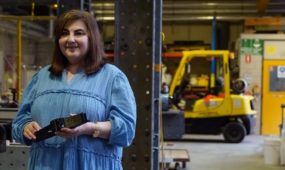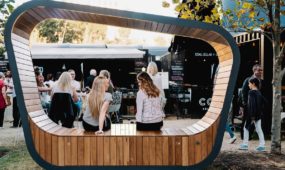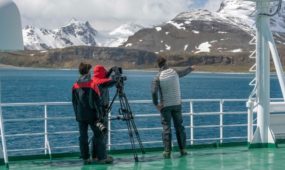Aussie link to Pan American Games
Innovation
ALTHOUGH not competing in the Pan American/Parapan Games, Australia will still be the centre of attention at the closing ceremony Toronto, Canada.

Sign up to receive notifications about new stories in this category.
Thank you for subscribing to story notifications.
Australian company FCT Flames designed and built the flame cauldron used for the 2015 Pan American/Parapan Games. The ceremonial extinguishing of the flame, which will be beamed around the world, will be one of the highlights of the closing ceremony on Saturday.
Based in Adelaide, South Australia, FCT Flames has supplied all the flames – and the technology behind them – for every major world sporting event in 2015, including the Asian Games in Singapore, inaugural European Games in Baku and the current Pan American-Parapan Games in Toronto.
FCT has been involved in every Olympic Games since Sydney 2000 and has supplied cauldrons to a host of other major events including the Asian and Arab Games.
The company has a history of manufacturing the torches used in many of the torch relays that are carried around the world.
The flame symbolises the spirit of the athletes uniting in both competition and friendship at the Games and the lighting of the cauldron signifies the beginning of the event.
The next Olympics will be held in Rio in 2016 and like all other Olympics, the tender and design process remains a tightly guarded process.
“FCT Flames would like to be involved in these games as well,’’ FCT chief executive officer David Retallack said.
“There are many aspects that have to be considered in a cauldron design such as colour
“We have more than 15 years of experience with the technology and how to apply it which is reflecting in our success around the world.’’
Vigorous research and development, which includes creating scale models, has played an important part for the company in winning the contracts to create the cauldrons for many of the world’s major sporting events for the past 15 years.
“Working out how the flame will operate in windy or rainy conditions, dealing with rotating or moving cauldrons, confined spaces, the fuel used for the flame such as LPG or natural gas, storage systems for the fuel and logistics of the fuel delivery all have to be taken into account,’’ he said.
“Not surprisingly, a very high level of expertise and technical skill is required.’’
Retallack said the Athens Olympics in 2004 was particularly challenging as it required flaming Olympic rings to appear out of a body of water that filled the stadium floor.
“Each and every job is unique and present its own challenges,’’ he said.
“Meeting engineering standards for each nation, having dialogue with the artistic designer and interpreting their vision requires a lot of back and forth discussions.
“Secrecy is also paramount, as the first time the world sees the Olympic cauldron is when it is lit at the opening ceremony.
While the cauldron is often designed by a third party FCT has also been contracted to design the cauldron itself.
“When we are asked to design the cauldron ourselves we call on the expertise of other South Australia companies for the materials and skills we need, it becomes a truly collaborative effort’’ he said.
“Bringing all that expertise together really is fantastic for manufacturing businesses in South Australia. In the end it is all about creating one minute when everything has to work and come together, when the cauldron is revealed and lit for the first time.
“I always watch the Olympics at that significant lighting moment, sometimes I’m there in person, other times it’s on television like most people.
“It’s definitely a tense moment but I always know we’ve done the hard work necessary to make it successful – we haven’t had a problem yet.’’
“It is incredibly satisfying and humbling to have millions, and sometimes billions, of people around the globe witnessing and appreciating our work.
The business now has offices across the world including Turkey, Germany, and the USA.
“Having a local presence in our strategic markets does help,’’ he said.
“Our other work includes memorial flame statues, development of fountain and flame shows and architectural flames which all keep us busy between the Games events.
“We employ a permanent staff of around 25 in Adelaide which we increase when the work demands it. Ideally, we like to have 12 months to work on a design but there are occasions when the time frame is much more limited and challenging.’’
Jump to next article



